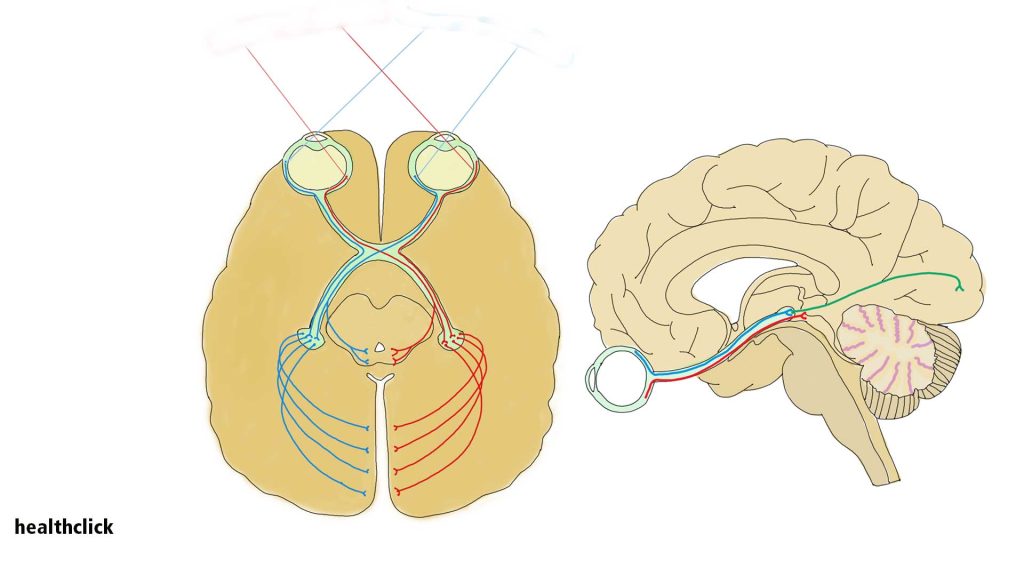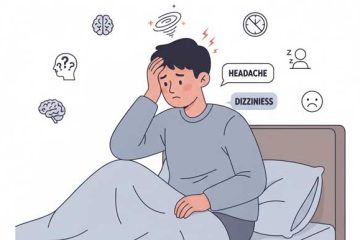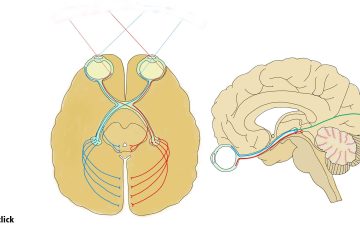The vestibular system can be impaired during a concussion. The ocular motor exam for concussion is the same as the ocular motor exam for any other condition. You’re really looking for impairments in the vestibular system. The saccade test for the post-concussive patient is a way to look and see how well patients can move their eyes rapidly from one target to another. Saccades happen incredibly quickly, so quickly, in fact, that it’s almost difficult to see them when you are looking at your patient. So the patient is just asked to move their eyes from the center to a target quickly. It is important to hold the head so that the patient doesn’t move their head in order to get to the target, that they are just using eye movement.
Watch this video on The Saccade Test for the Post-Concussive Patient
When the patient looks to the target, the movement should be very fast, so fast you can hardly see it, and should happen pretty accurately. Occasionally, a patient will take two eye movements to get to the target. And that’s considered Ok if it’ is more than two eye movements and that is considered abnormal. When performingthe saccade test for the post-concussive patient, the patient also should not overshoot the target and then come back to it. Overshooting the target and coming back to it is considered hypermetric saccades and that is a strong central sign and often indicative of a cerebellar lesion of some sort. If the patient has hypermetric saccades, that means that it takes them too many psychotic eye movements to get to the target and if that happens consistently, then that’s also considered a central sign. Occasionally the case where patients will have very slow saccades and again, it’s a central sign. In that case, the eye movement may happen and get and the patient may get to the target accurately, but the velocity of the movement is just too slow.
Post-concussion syndrome (PCS) can affect up to 20%-30% of patients with mild closed head injury (mCHI), comprising incomplete recovery and debilitating persistence of post-concussional symptoms.
https://pubmed.ncbi.nlm.nih.gov/19617197/

Learn more about the Saccades Test and other Tracking Exercises for Post Concussion Patients
For a specific rehab training exercise relating to saccades, go to the healthclick blog: Oculomotor Dysfunction and Tracking Exercises
The video in this blog is referenced from the concussion rehab continuing education course, Invisible Trauma. This online course is included in our all-access annual subscription.
This information on the saccade test for the post-concussive patient is included in our online courses in our new $189 all access subscription
Progressive Vestibular Treatments for the over 60 population
Current Concussion Evaluation and Treatment Approaches
References
Hamish G. MacDougall, Leigh A. McGarvie, G. Michael Halmagyi, Stephen J. Rogers, Leonardo Manzari, Ann M. Burgess, Ian S. Curthoys, Konrad P. WeberNeurology Jul 2016, 87 (4) 410-418; DOI: 10.1212/WNL.0000000000002827
Navari, Elena; Cerchiai, Niccolò; Casani, Augusto Pietro Assessment of Vestibulo-ocular Reflex Gain and Catch-up Saccades During Vestibular Rehabilitation, Otology & Neurotology: December 2018 – Volume 39 – Issue 10 – p e1111-e1117 doi: 10.1097/MAO.0000000000002032


